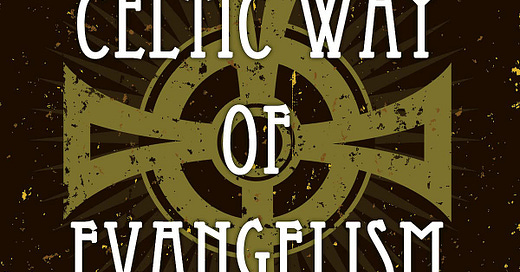Among biblical scholarly circles, talk of “re-evangelizing” the West is a popular topic and for good reason. While efforts to evangelize the global South have been largely successful, religiosity among Western countries have fallen to significantly low numbers. Prior to this recent increase in faith from the younger generations, seminaries have been brimming with ideas on how to bring people back to church – any church. As is the norm with any college work, my class was given the opportunity to pick one book to write a paper, and being one of few students interested in anything “Celtic,” I chose George G. Hunter’s The Celtic Way of Evangelism.
A distinguished scholar within the areas of world mission and evangelism, Hunter would be the individual to ask how the Christian faith can be reinvigorated within the West. His approach begins with a simple question: what did the Irish do when the faith began to wane in the early medieval period, and what can we learn from their example? Hunter attempts to answer these questions by retracing the steps of Saint Patrick, determining what methods he employed in evangelizing the Irish. By doing so, Hunter believes that he may have found a way to ensure the survival of Christianity for the next millennium.
Without a doubt, this is one of the most unique approaches to both world mission and Celtic studies that I have encountered. From a small ecclesiastical outpost in northwestern Europe to being the Western intellectual powerhouse of the early medieval world, the rise of the early Irish church has much to teach us regarding successful missionary strategies. Hunter recognizes this, learning from not only Saint Patrick but also Saints Columba and Aidan. This approach offers a contribution to both his field and the field of Celtic studies, focusing not on their theology per se but the methods they used to Christianize the isles of Britain and Ireland.
Despite the novel approach of turning to older examples for insight on how to evangelize in the West, Hunter’s reasoning is extremely flawed. His sources are a tapestry of works from notable Celticists such as Oliver Davies and Nora Chadwick but are also clouded with works by Neo-Celtic authors such as Esther van der Waal and Philip J. Newell. The influence from the latter is obvious, particularly when it comes to the tired myth of the domineering Roman Church conquering the helpless Celtic Church. If Hunter had read Saint Patrick’s hagiography carefully, he would’ve noticed that Padraig Naomh referred to himself as a Roman citizen and considered himself part of the Roman Church. This lack of nuance is appalling, especially for a notable scholar like Hunter.
The most unfortunate missed opportunity in this exploration is in how the efforts of the Irish missionaries could be used to create substantive missionary efforts in countries such as Japan or China. While both countries do possess a Christian community, these communities are small largely due to the lack of cultural overlap between Asia and the Middle East. In my opinion, what these missionaries offer is a means of creating overlap by connecting with indigenous philosophical schools such as Confucianism and Daoism. After all, this is exactly what Saint Patrick accomplished in Ireland with the filí tradition.
Hunter’s The Celtic Way of Evangelism provides an introduction into the potential overlap between Celtic theology – for lack of a better term – and world mission. This accomplishment is overshadowed only by its lack of rigor in the Celtic department, rehashing tired stereotypes reminiscent of green beer for theologians. While I do not think it offers much in the efforts of re-evangelizing the West, as this is already in progress, but it may offer some insights in how to approach countries with a much smaller Christian community. If it’s good enough for Saint Patrick, it’s good enough for me.



